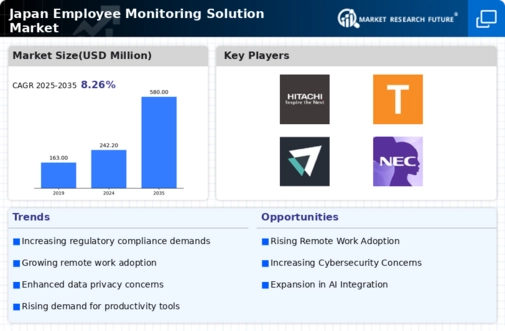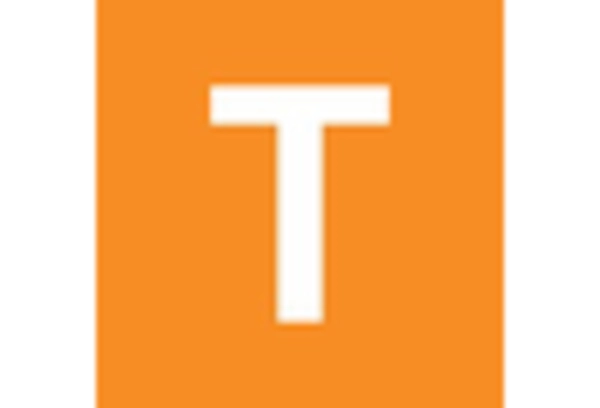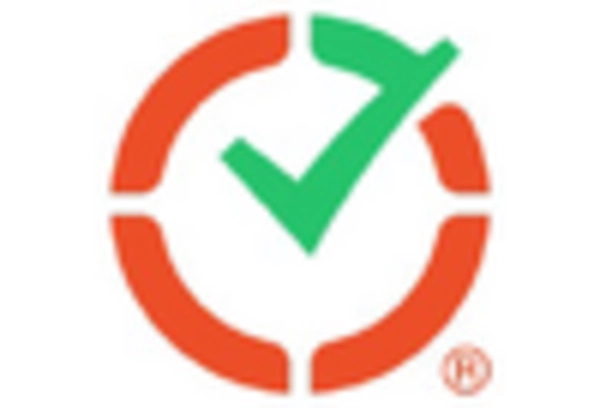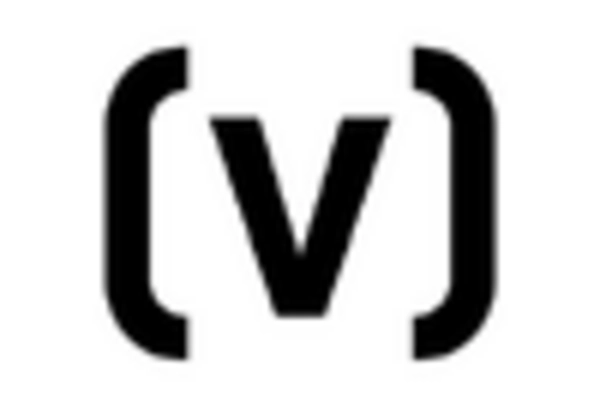Rising Remote Work Culture
The increasing prevalence of remote work in Japan has catalyzed a shift in the employee monitoring-solution market. As organizations adapt to flexible work arrangements, the demand for monitoring solutions that ensure productivity and accountability has surged. According to recent data, approximately 30% of the workforce in Japan is now engaged in remote work, necessitating tools that can track performance and engagement from afar. This trend is likely to continue, as companies seek to maintain operational efficiency while accommodating employee preferences. Consequently, the employee monitoring-solution market is expected to expand, driven by the need for effective oversight in a remote work environment.
Focus on Data Security and Privacy
In Japan, the heightened awareness surrounding data security and privacy is shaping the employee monitoring-solution market. With stringent regulations such as the Act on the Protection of Personal Information, companies are compelled to adopt monitoring solutions that prioritize data protection. This regulatory landscape has led to a growing demand for tools that not only monitor employee activities but also ensure compliance with legal standards. As organizations navigate these complexities, the employee monitoring-solution market is likely to see an uptick in solutions that integrate robust security features, thereby addressing both monitoring needs and regulatory requirements.
Increased Emphasis on Performance Metrics
The shift towards performance-based evaluations in Japanese companies is driving the demand for employee monitoring solutions. Organizations are increasingly recognizing the importance of quantifiable metrics in assessing employee productivity and effectiveness. This trend is reflected in the employee monitoring-solution market, where tools that provide detailed analytics and performance reports are gaining traction. Approximately 40% of companies in Japan are now utilizing performance metrics to inform management decisions, indicating a significant shift in workplace culture. As this emphasis on data-driven performance continues, the market for monitoring solutions is expected to expand, catering to the needs of organizations seeking to enhance workforce efficiency.
Growing Need for Employee Engagement Solutions
The evolving landscape of employee engagement in Japan is influencing the employee monitoring-solution market. Companies are increasingly aware that engaged employees contribute to higher productivity and lower turnover rates. As a result, there is a growing demand for monitoring solutions that not only track performance but also foster engagement through feedback mechanisms and recognition programs. This trend is likely to propel the employee monitoring-solution market forward, as organizations seek tools that align monitoring with employee satisfaction. By integrating engagement features, these solutions can help create a more motivated workforce, ultimately benefiting overall organizational performance.
Technological Advancements in Monitoring Tools
The rapid evolution of technology is significantly influencing the employee monitoring-solution market. Innovations such as advanced analytics, machine learning, and real-time data processing are enhancing the capabilities of monitoring tools. In Japan, the market for these solutions is projected to grow by 15% annually, as organizations increasingly adopt sophisticated technologies to gain insights into employee performance. These advancements not only improve the accuracy of monitoring but also facilitate a more nuanced understanding of workforce dynamics. As a result, businesses are more inclined to invest in employee monitoring solutions that leverage cutting-edge technology to optimize productivity.

















Leave a Comment